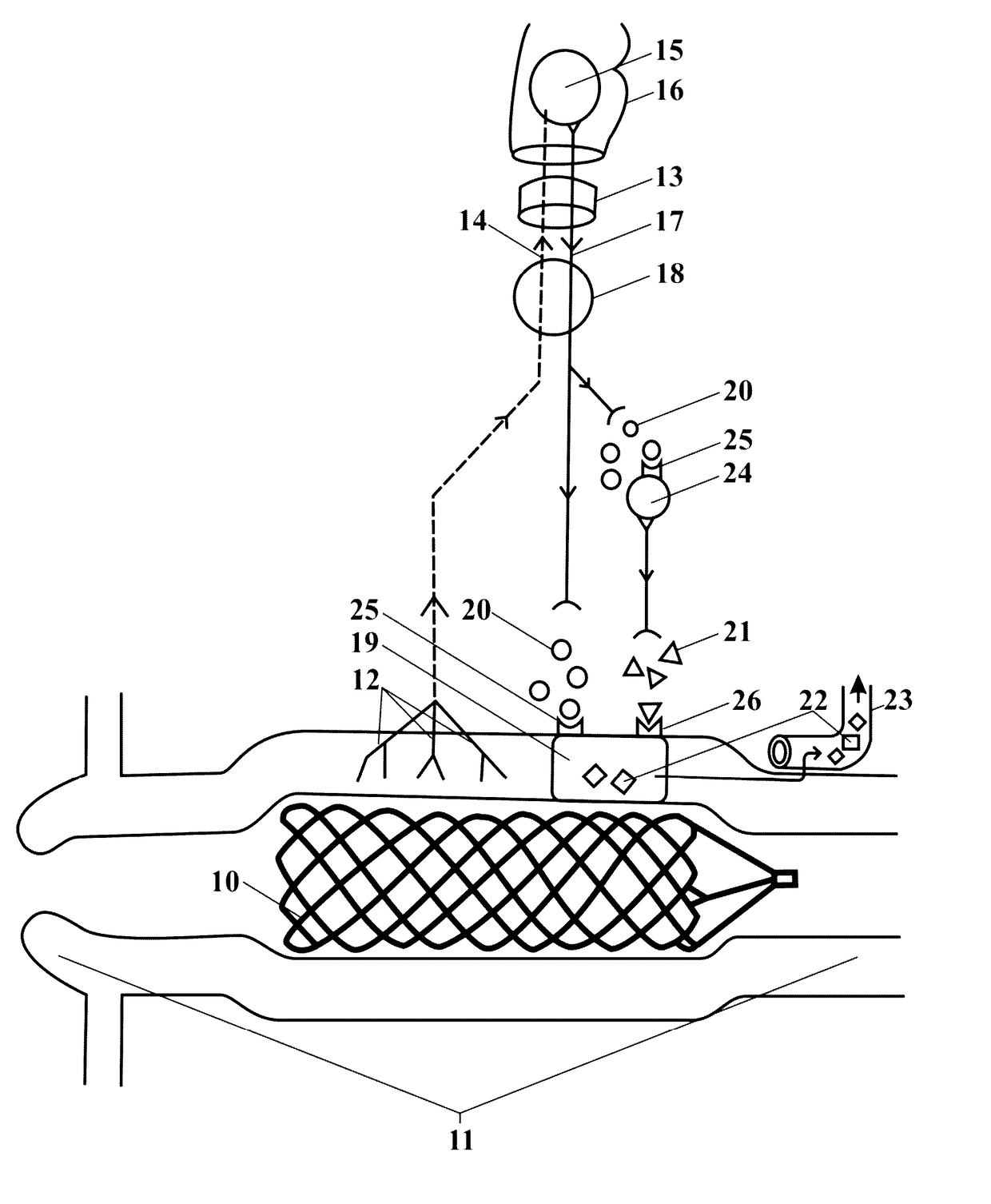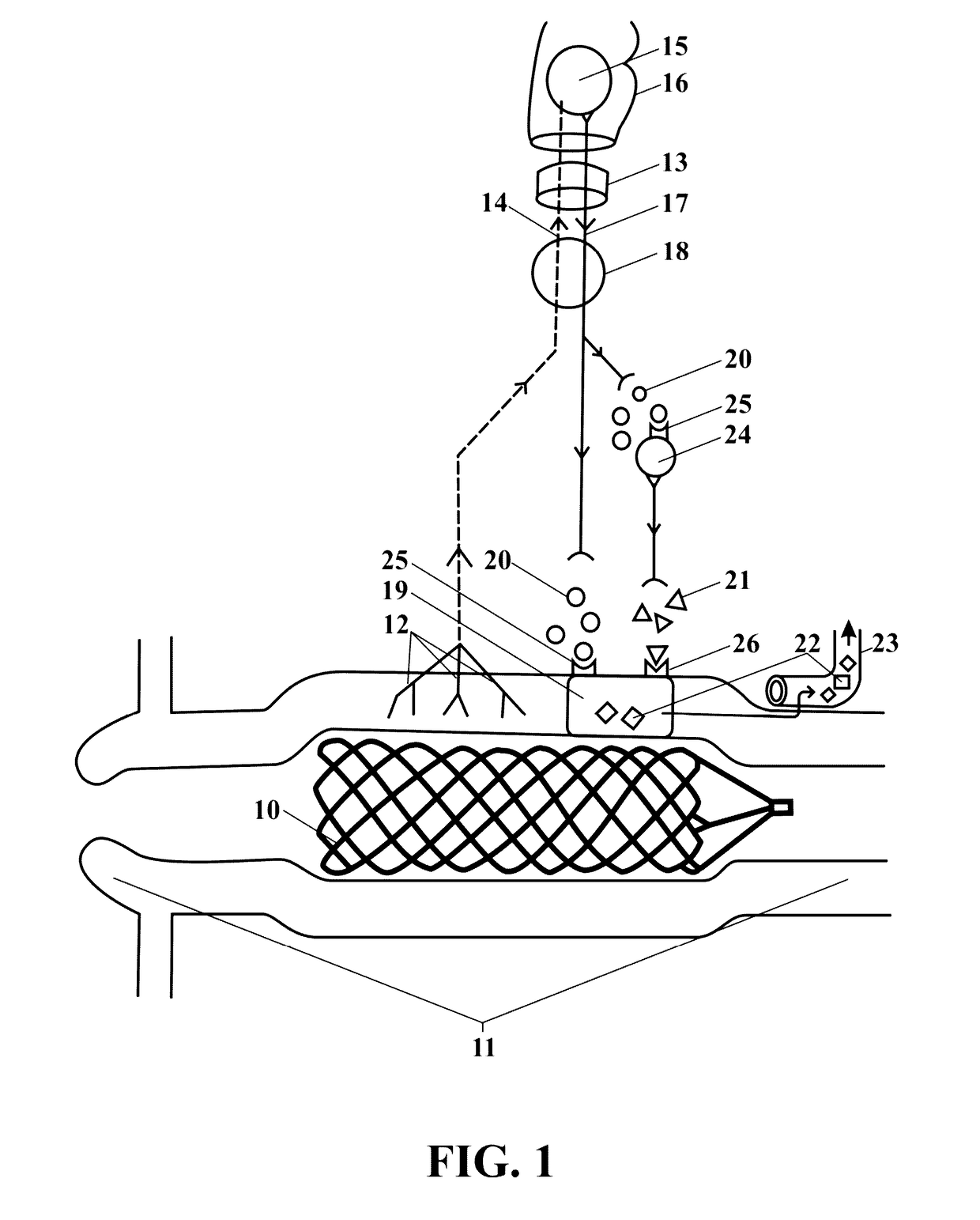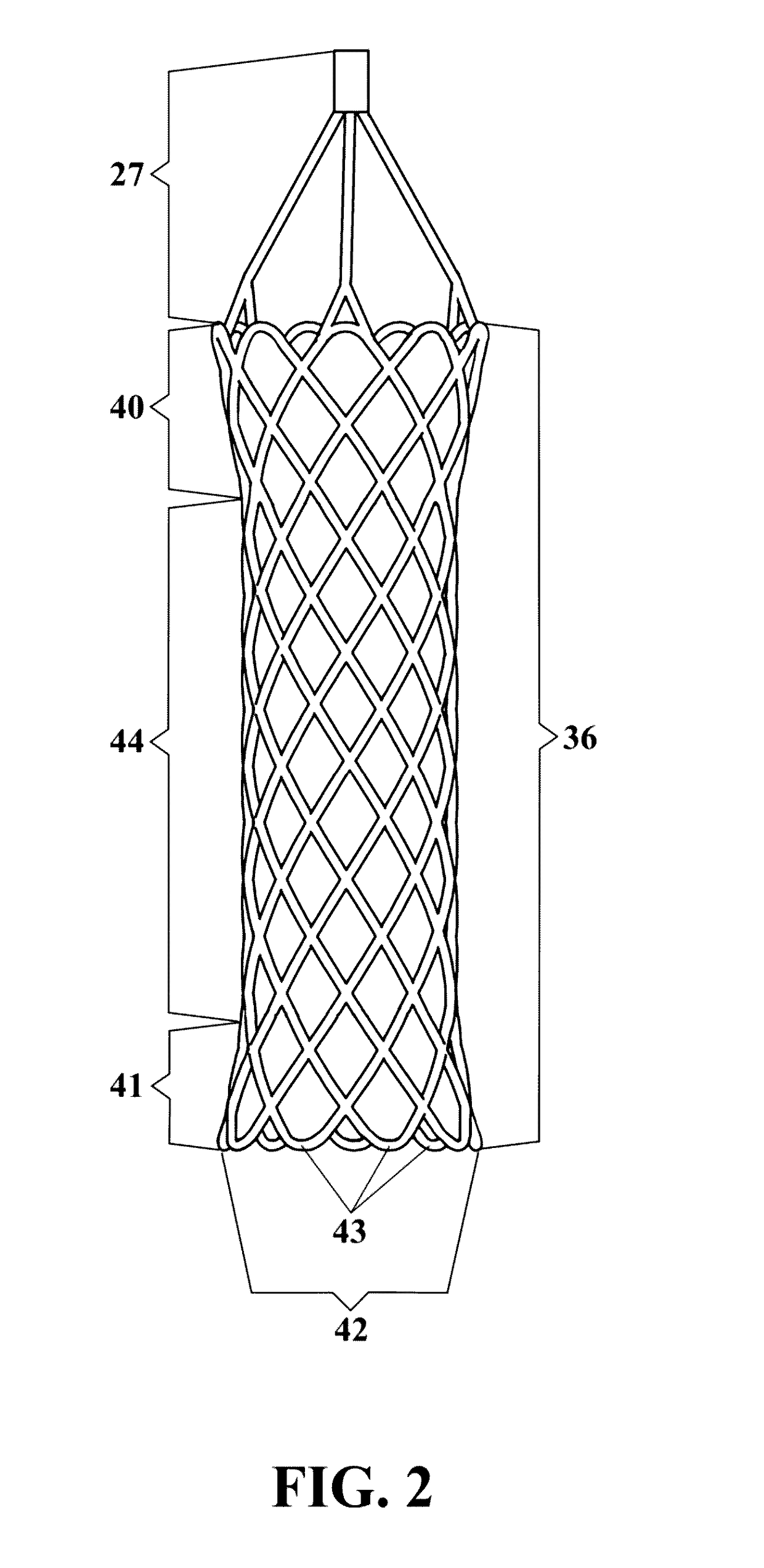Anti-intussusception ileal stent and its use as an Anti-hyperglycemic method
a technology of ileal stent and anti-hyperglycemic method, which is applied in the field of anti-intussusception ileal stent and its use as an anti-hyperglycemic method, can solve problems such as theoretically triggering an intussusception, and achieve the effect of less complications and less invasiveness
- Summary
- Abstract
- Description
- Claims
- Application Information
AI Technical Summary
Benefits of technology
Problems solved by technology
Method used
Image
Examples
Embodiment Construction
[0009]This description exemplifies the core concept of the method and principles of the invention, but they are not limited to the particular embodiments illustrated herein.
[0010]As shown in FIG. 1, an ileal stent (10) placed in the terminal ileum (11) is proposed to activate the enteral sensory branches (12), and this stimulus is transmitted via the vagus nerve (13) afferent fiber (14) toward the vagus nucleus (15) in the brain stem (16). This received stimulus subsequently activates the vagus efferent (17). After passing through the celiac ganglion (18), the ileal branches of this efferent path stimulate the ileal L-cells (19) either directly via acetyl-choline Ach (20) or indirectly via GRP (21) to enhance the GLP1 (22) secretion. GLP1 enters the microvasculature (23) of the intestine and systemically decreases glycemia. The GRP is a neuropeptide that is locally released from the postganglionic parasympathetic fibers of GRPergic neurons (24) localized to some myenteric ganglions....
PUM
 Login to View More
Login to View More Abstract
Description
Claims
Application Information
 Login to View More
Login to View More - R&D
- Intellectual Property
- Life Sciences
- Materials
- Tech Scout
- Unparalleled Data Quality
- Higher Quality Content
- 60% Fewer Hallucinations
Browse by: Latest US Patents, China's latest patents, Technical Efficacy Thesaurus, Application Domain, Technology Topic, Popular Technical Reports.
© 2025 PatSnap. All rights reserved.Legal|Privacy policy|Modern Slavery Act Transparency Statement|Sitemap|About US| Contact US: help@patsnap.com



